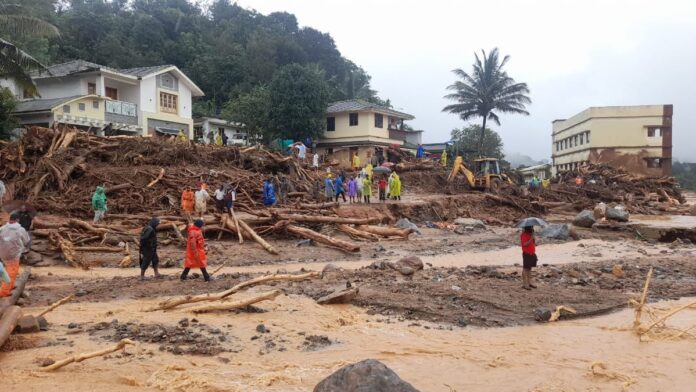Wayanad, Kerala: The picturesque district of Wayanad, known for its lush greenery and serene landscapes, is grappling with the aftermath of a devastating landslide that occurred earlier this year. The historic landslide, triggered by heavy rainfall, caused widespread destruction, leaving numerous villages buried under debris and displacing thousands of residents. As the region slowly recovers, communities are facing the daunting task of rebuilding their lives while considering sustainable solutions for the future.
The landslide, one of the worst in the state’s history, resulted in significant loss of life, property damage, and infrastructure disruption. The affected villages, once vibrant and bustling, were reduced to rubble, leaving residents to navigate the challenges of displacement and uncertainty. The immediate response from the government and relief agencies was crucial in providing essential aid to the affected population, including food, shelter, and medical assistance.
However, the road to recovery is long and arduous. Rebuilding homes, infrastructure, and livelihoods requires substantial resources and careful planning. The local communities, in collaboration with government officials and NGOs, are working tirelessly to assess the damage, identify priorities, and develop sustainable reconstruction plans. One of the key challenges is ensuring that the rebuilding efforts are resilient to future natural disasters and incorporate sustainable practices.
Sustainable Reconstruction Initiatives:
- Reforestation and Afforestation: Planting trees in deforested areas can help prevent erosion and mitigate the impact of future landslides.
- Improved Drainage Systems: Implementing efficient drainage systems can help divert rainwater away from vulnerable areas and reduce the risk of flooding.
- Sustainable Building Practices: Encouraging the use of eco-friendly building materials and techniques can enhance the resilience of structures and minimize environmental impact.
- Community-Based Disaster Preparedness: Empowering local communities with disaster preparedness training and early warning systems can help reduce vulnerability and improve response times.
As Wayanad continues to rebuild, it is essential to prioritize sustainable practices that promote long-term resilience and environmental protection. By adopting a holistic approach that addresses both immediate needs and future challenges, the region can emerge from this disaster stronger, more resilient, and better equipped to face the uncertainties of climate change.

